Sustainable Airport Architecture: Pioneering a Greener Future in Aviation

The Challenge of Sustainable Airport Design
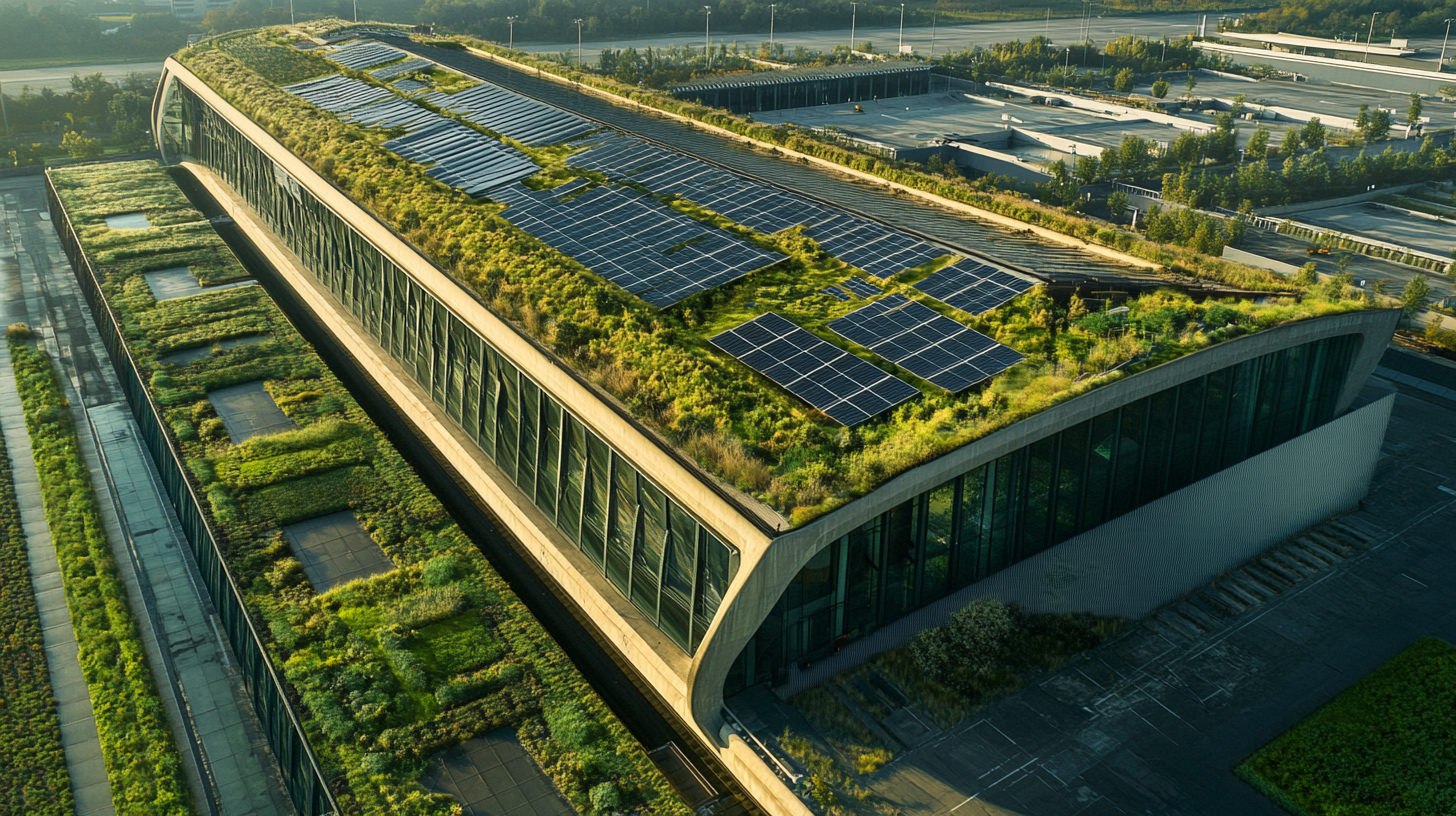
Designing sustainable airports is a complex endeavor. Airports must balance operational efficiency with environmental responsibility, all while handling high volumes of passengers and aircraft. Challenges include:
- Runway Constraints: Airports often face limited space for expansion, particularly in densely populated areas, making it challenging to accommodate the need for long, unobstructed runways essential for aircraft takeoffs and landings. These spatial limitations necessitate innovative design solutions that maximize existing space without compromising safety or operational efficiency.
- Urban Settings: The proximity of many airports to urban centers requires meticulous planning to mitigate negative impacts such as noise pollution and air quality degradation. Sustainable airport architecture must therefore incorporate strategies to reduce acoustic disturbances and emissions, ensuring harmony with surrounding communities and adherence to environmental regulations.
- High Visitor Traffic: With millions of passengers traversing airports annually, managing energy consumption and waste becomes a significant challenge. Sustainable design must address the substantial demand for electricity, heating, and cooling, as well as the efficient handling of vast amounts of waste generated, all while providing a comfortable and seamless experience for travelers.
Despite these considerable hurdles, architects and engineers are relentlessly innovating to devise solutions that harmonize operational efficiency with ecological responsibility. Through groundbreaking design approaches and the integration of cutting-edge technologies, they are transforming the traditional airport model into a sustainable infrastructure that meets the demands of the present while safeguarding the environment for future generations.
Innovative Sustainable Strategies

Eco-Friendly Materials and Designs
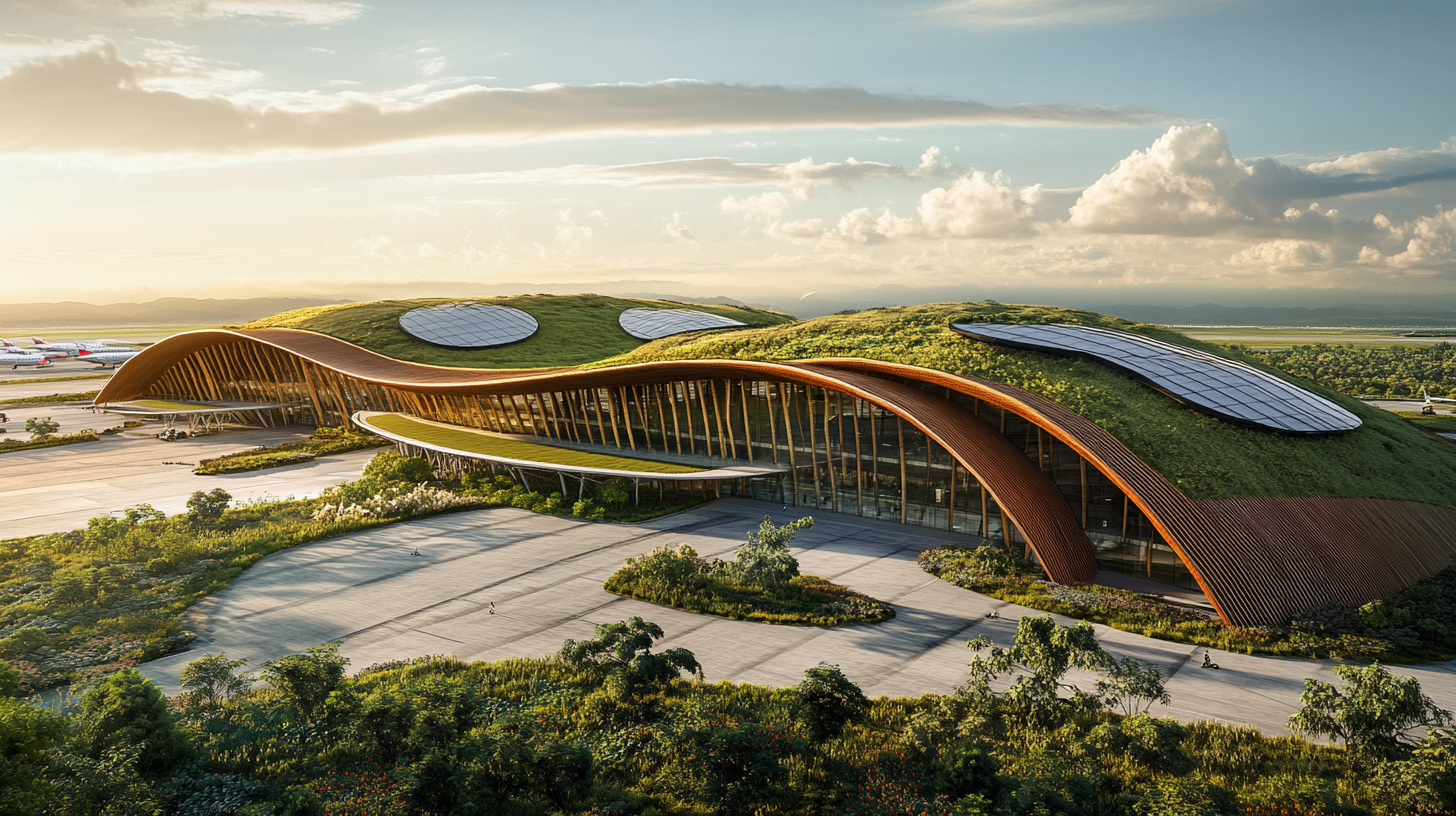
The use of sustainable materials and innovative design strategies lies at the heart of green airport architecture. Selecting materials with low environmental impact, such as recycled or locally sourced components, reduces the carbon footprint of construction. An exemplary case is the extension of Oslo Airport, designed by Nordic – Office of Architecture. This project prominently features recycled materials and harnesses passive solar energy to optimize energy efficiency. In an ingenious approach to climate control, the airport uses harvested snow as a natural coolant during warmer months, significantly reducing reliance on conventional air conditioning systems. These sustainable practices have earned the extension a BREEAM Excellent rating, highlighting its outstanding environmental performance. Innovative Use of Recycled Materials in Airport Construction
Similarly, the Tom Bradley International Terminal at Los Angeles International Airport (LAX), conceived by Fentress Architects, exemplifies sustainable design that does not compromise on functionality or passenger comfort. Achieving LEED Gold certification, the terminal incorporates an array of green features. The use of expansive skylights and strategically placed windows maximizes natural daylight, reducing the need for artificial lighting and enhancing the passenger experience. Advanced stormwater management systems reduce runoff and improve water quality, while high-efficiency plumbing fixtures minimize water consumption. Collectively, these elements significantly reduce the terminal’s environmental impact and operational costs. Implementation of LEED Standards in Airport Design
Renewable Energy Integration

Airports are increasingly harnessing renewable energy sources to power their expansive operations, significantly reducing their reliance on fossil fuels. Denver International Airport, for instance, has implemented extensive solar power installations, generating clean energy that supplies a substantial portion of the airport’s electricity needs. Additionally, Stockholm Arlanda Airport has pioneered the use of biofuels for heating, effectively becoming Europe’s first carbon-neutral airport. By integrating renewable energy solutions, these airports set a benchmark for environmental responsibility in aviation. Role of Solar and Biofuel in Sustainable Aviation
Guadalajara’s Terminal 2 aspires to become a net-zero airport, where the total amount of energy used is equal to the amount of renewable energy created on-site. Achieving net-zero status involves meticulously balancing energy consumption with renewable generation through technologies such as solar panels and geothermal systems. This ambitious goal necessitates close collaboration among architects, engineers, airport authorities, and government agencies. It also involves adopting holistic design processes that consider the building’s entire lifecycle—from construction and operation to eventual decommissioning—to minimize environmental impact comprehensively. Net-Zero Energy Building Strategies in Airport Design
Biophilic and Human-Centered Design
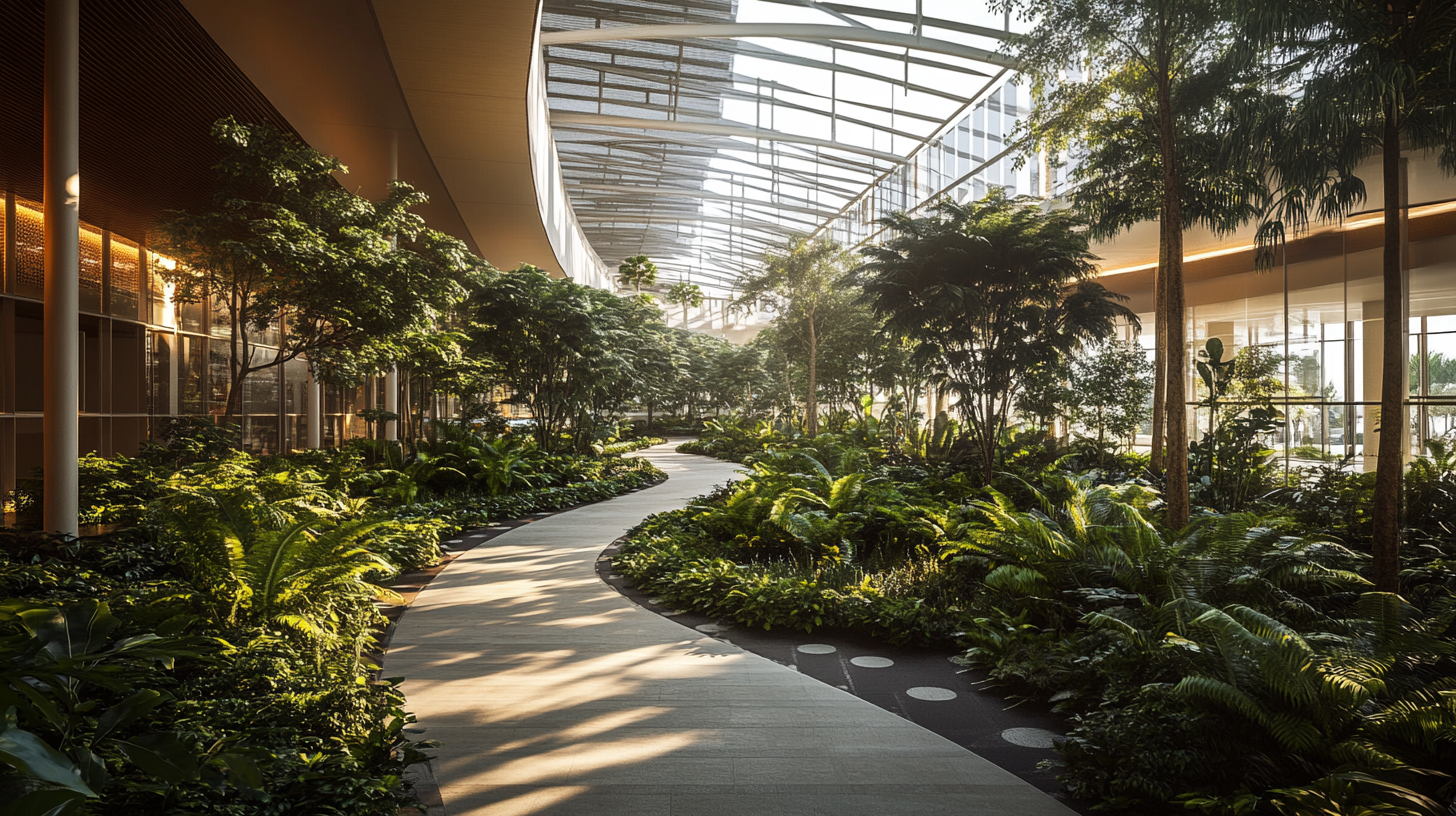
Incorporating biophilic elements—designing buildings that connect occupants more closely to nature—into airport architecture not only enriches the passenger experience but also supports environmental objectives. Singapore Changi Airport epitomizes this approach, featuring lush indoor gardens, waterfalls, and green walls that create a serene and rejuvenating atmosphere. These natural elements improve indoor air quality by filtering pollutants and contribute to the psychological well-being of travelers, alleviating stress associated with air travel. Biophilic Design Principles in Modern Airports
Similarly, Seattle-Tacoma International Airport’s biophilic expansion incorporates extensive use of natural materials, daylighting, and green spaces, fostering a calming environment conducive to relaxation and wellbeing. Boston Logan International Airport integrates sustainability features such as green roofs and rainwater harvesting systems, demonstrating how natural elements can be seamlessly integrated into functional airport design. These airports illustrate the potential for sustainable architecture to enhance both environmental performance and passenger satisfaction. The Impact of Biophilic Design on Passenger Well-being in Airports
Case Studies: Leading the Way in Sustainability
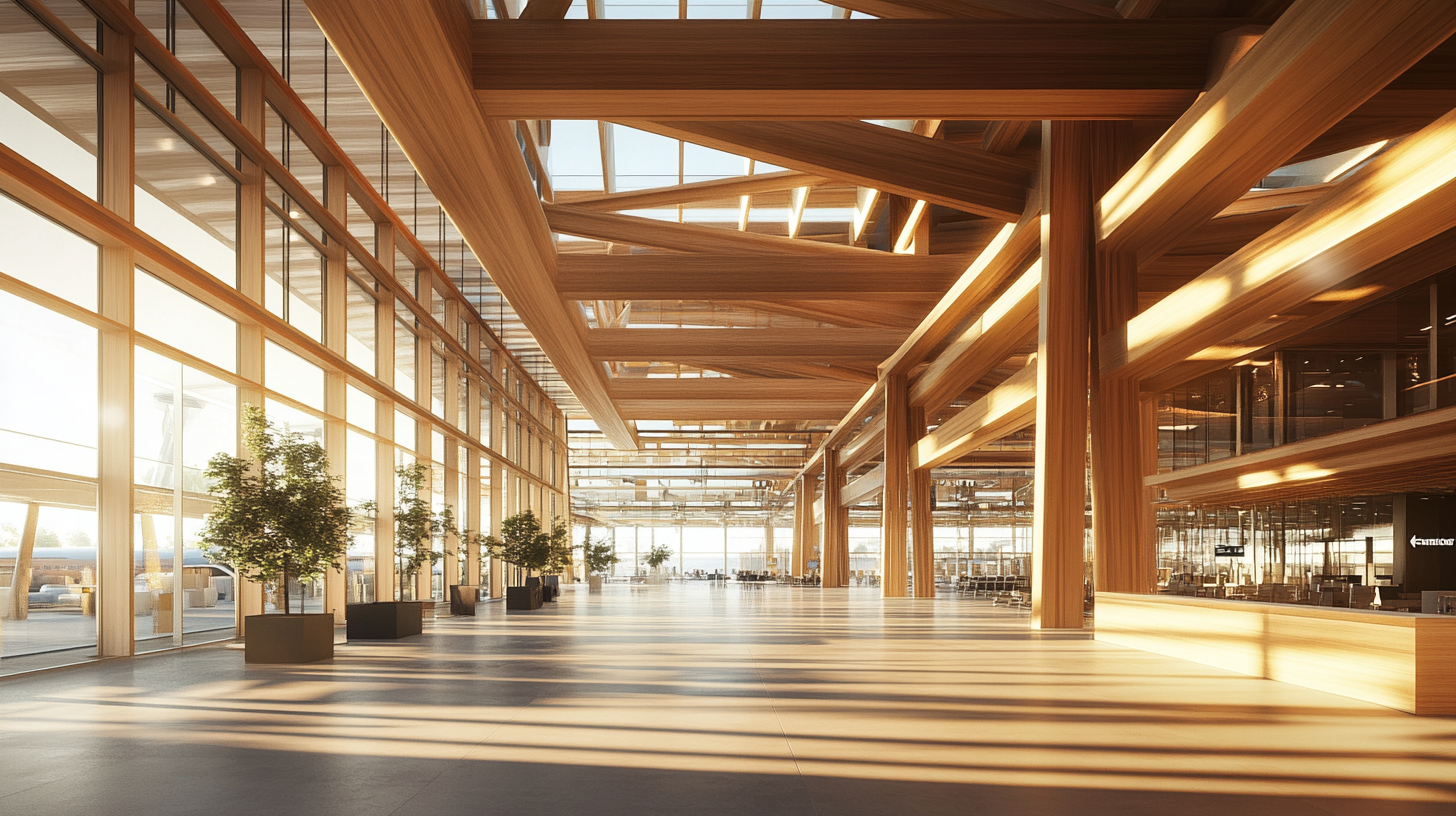
Zurich Airport’s Timber Structures
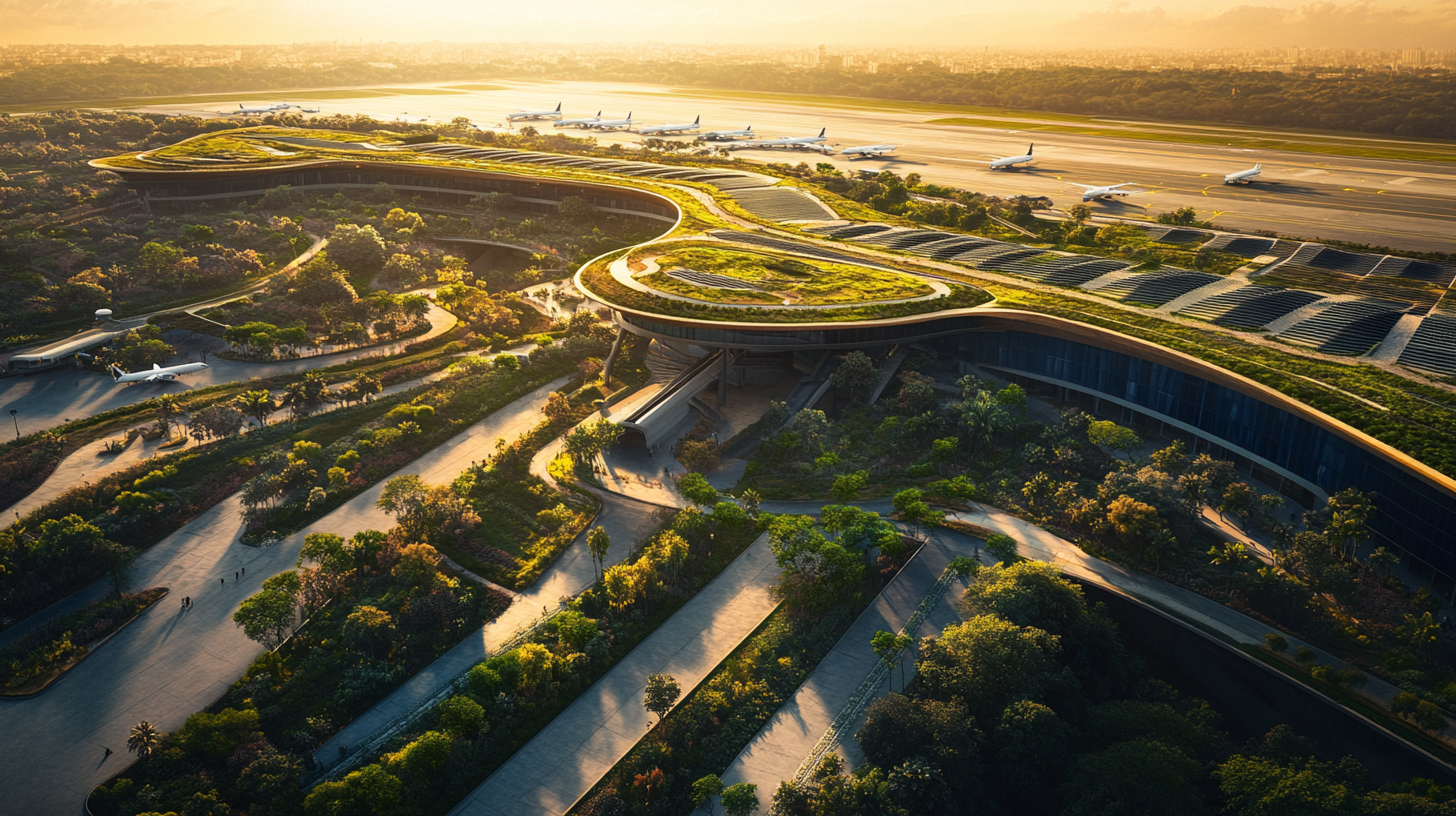
At Zurich Airport, architectural firms BIG and HOK have embraced the use of timber—a renewable and carbon-sequestering material—in their structural designs. Timber construction contributes significantly to reducing the building’s overall carbon footprint, as it requires less energy to produce than steel or concrete and stores carbon absorbed by the trees during growth. The utilization of timber also provides aesthetic warmth and structural robustness, demonstrating that sustainability and design excellence can go hand in hand. Advantages of Timber Construction in Sustainable Architecture
Delhi Noida International Airport
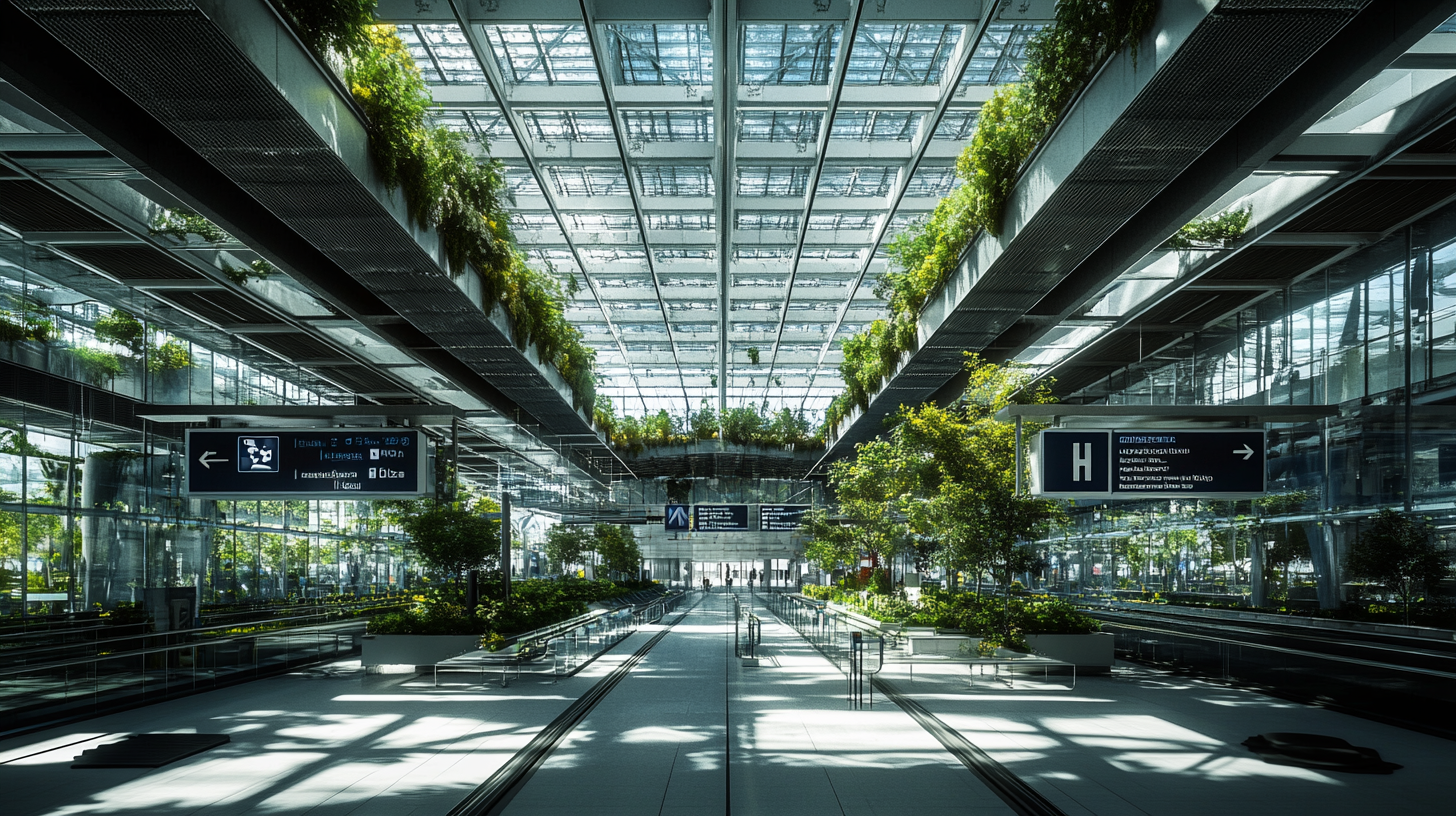
India’s Delhi Noida International Airport is a pioneering example of sustainability in emerging economies. As a carbon-neutral facility, it incorporates sustainable practices across every aspect of its operations. From utilizing eco-friendly construction materials to integrating renewable energy sources such as solar power, the airport exemplifies a commitment to environmental responsibility. The design also emphasizes efficient water management and waste reduction strategies, setting a new standard for sustainable infrastructure development in rapidly growing regions. Challenges and Successes of Carbon-Neutral Airports in Developing Countries
Madrid-Barajas Terminal 4

Madrid-Barajas Terminal 4, designed by RSHP and Estudio Lamela, is a testament to how sustainable design can transform an airport into a welcoming and inspiring space. The terminal’s bamboo-lined roofs not only provide a striking aesthetic but also utilize a rapidly renewable material with a lower environmental impact than traditional building products. The use of bright, color-coded columns enhances navigation while adding vibrancy to the interior. By emphasizing natural light, open spaces, and intuitive design, Terminal 4 not only reduces energy consumption but also elevates the passenger experience. The project’s excellence was recognized with the prestigious RIBA Stirling Prize in 2006. Humanizing Airport Spaces Through Sustainable Design
The Role of Accreditation and Global Initiatives
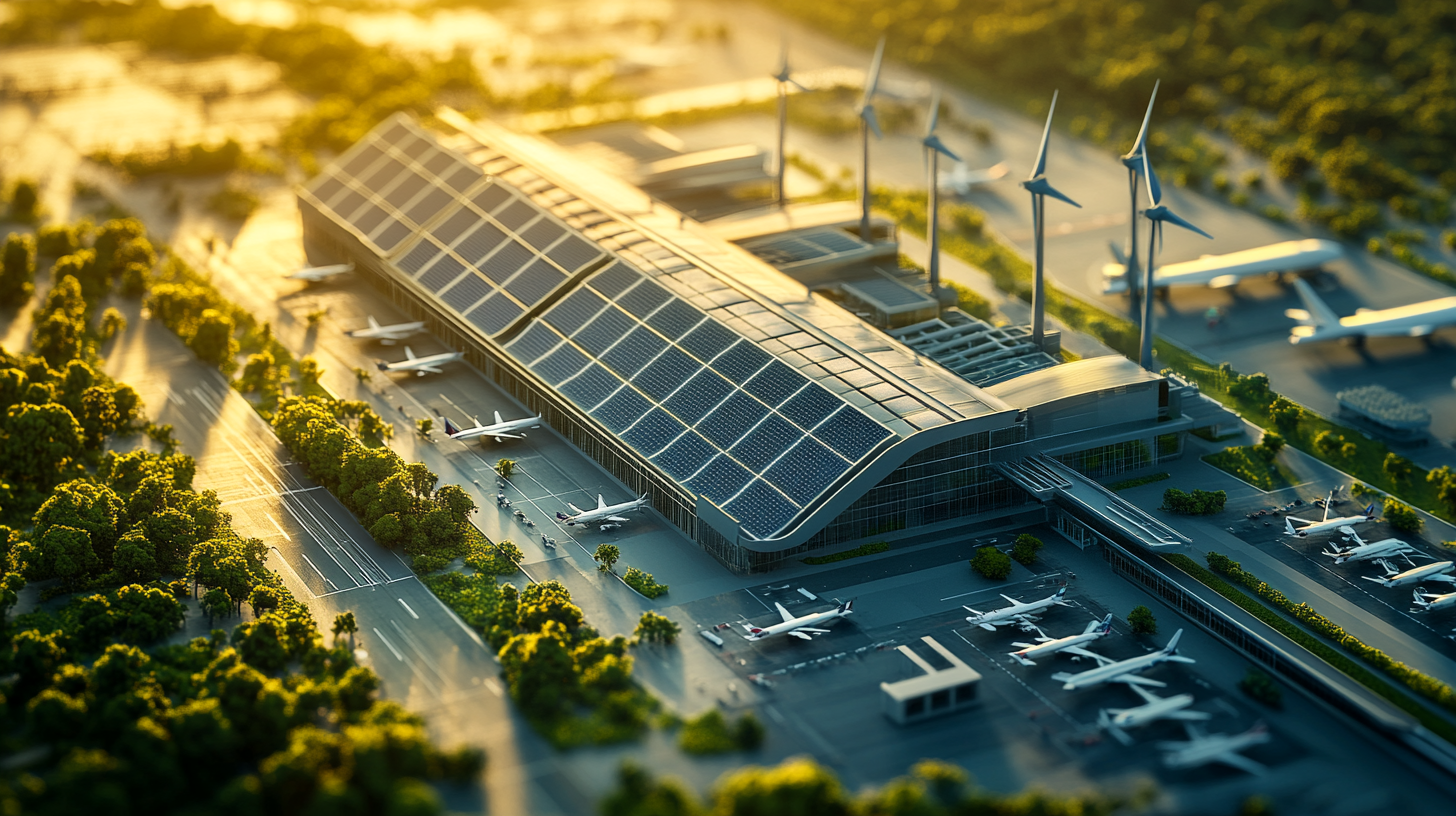
Global initiatives and accreditation programs are instrumental in promoting sustainability within the aviation industry. Programs like the Airport Carbon Accreditation (ACA) provide a standardized framework for airports to measure, manage, and reduce their carbon emissions. By participating in the ACA program, airports demonstrate their commitment to environmental responsibility and transparency. In Europe, the ACI EUROPE Sustainability Strategy signifies a collective pledge from 303 airports to achieve net-zero carbon emissions by 2050, with many ambitious airports targeting 2030 for accomplishing this goal. These commitments drive innovation and investment in sustainable technologies and practices across the industry. Global Standards for Carbon Reduction in Airports
In 2023, the ACA program advanced its commitment to environmental stewardship by introducing Level 5 accreditation, which places a stronger emphasis on substantial reductions in Scope 1, 2, and 3 emissions. This highest level of certification requires airports to engage stakeholders, including airlines and service providers, in collaborative emissions reduction efforts. Complementing these initiatives are technological advancements such as the Digital Green Lane, an innovation aimed at optimizing freight processes to reduce CO2 emissions. By streamlining operations and enhancing efficiency, such technologies contribute to the broader goal of minimizing the aviation industry’s environmental impact. Technological Innovations in Reducing Airport Emissions
Technological Advancements and the Future
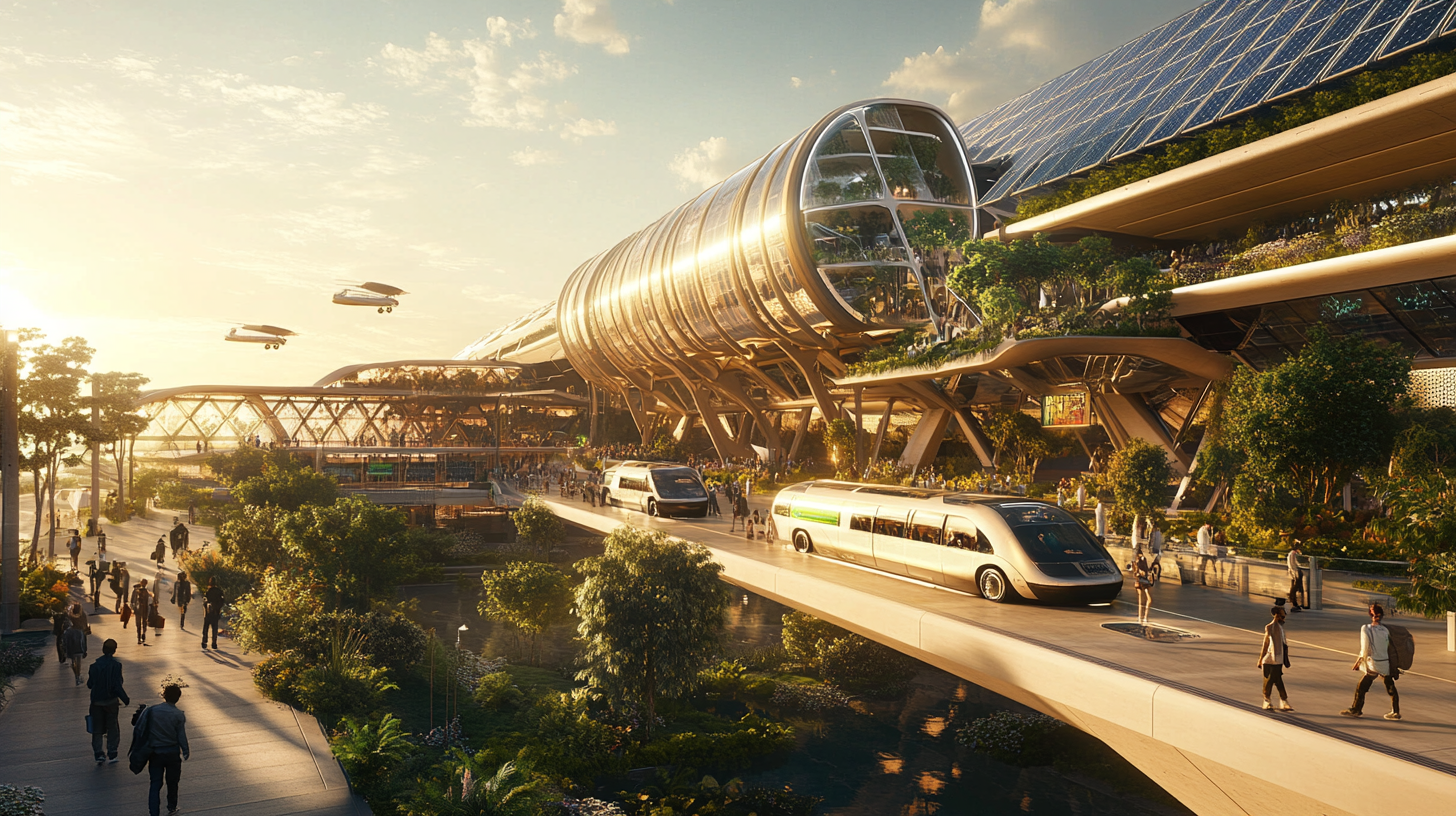
Embracing Renewable Technologies
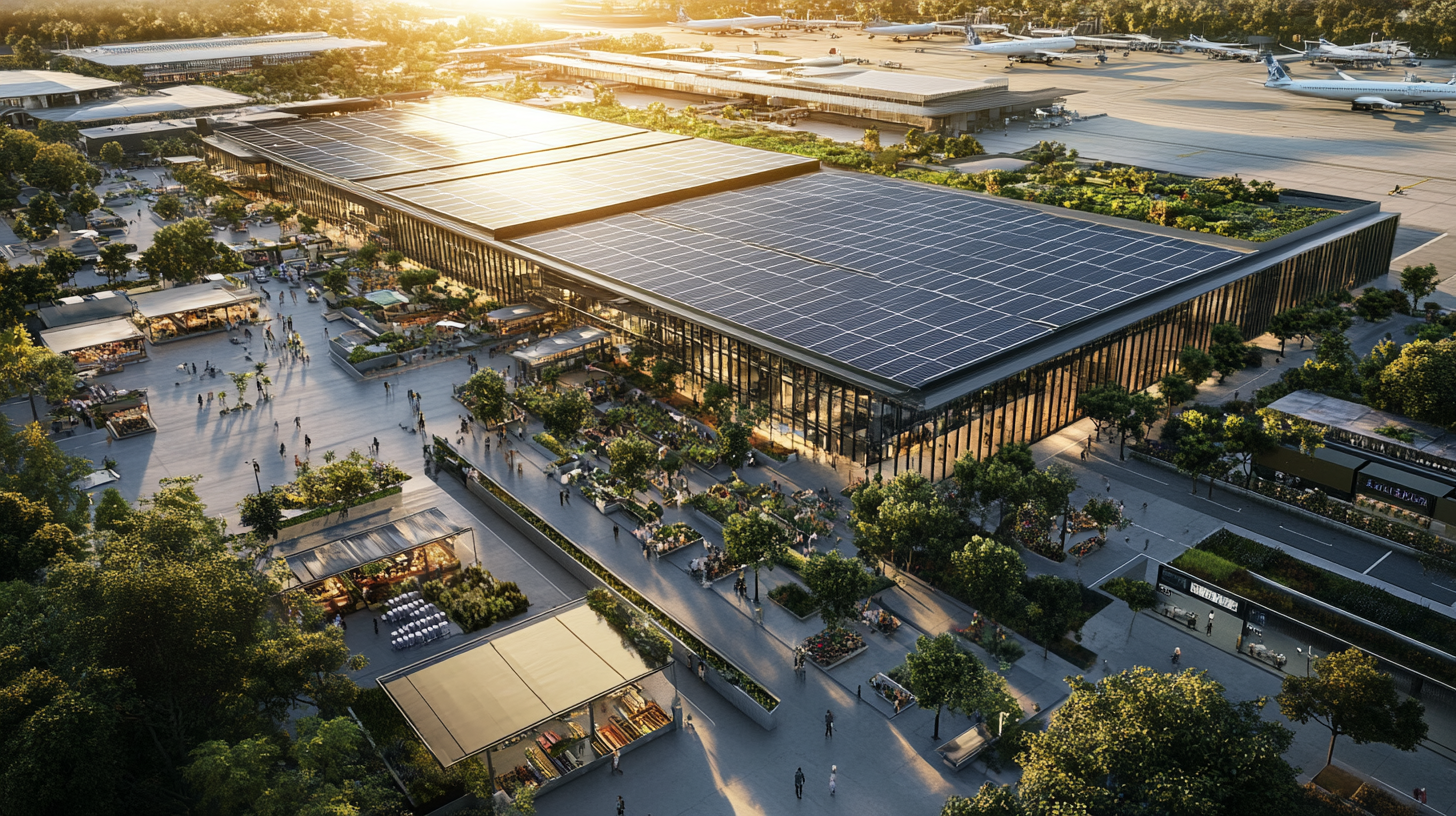
Embracing renewable technologies is critical to advancing airport sustainability. Airports are investing in cutting-edge innovations to reduce their environmental impact systematically. Amsterdam’s Schiphol Airport exemplifies this effort by transitioning its fleet of ground vehicles to electric power and actively exploring hydrogen-powered ground support equipment. These initiatives are part of Schiphol’s ambitious plan to achieve emission-free operations by 2030, demonstrating how technological adoption can drive significant environmental progress. Transition to Zero-Emission Ground Operations in Airports
Conceptualizing the Airport of 2100

Looking towards the future, architects and visionaries are conceptualizing radical new approaches to airport design that could redefine air travel by 2100. Nikhil Bang’s winning entry, “Green Gateway,” in the Fentress Architects Airport of the Future Global Student Design Competition 2020, envisions a zero-emission, decentralized airport model. His concept incorporates emerging technologies such as flying cars and air-purifying towers, aiming to drastically reduce emissions and enhance urban air quality. Dušan Sekulić’s proposal for “Drive-In Airports” introduces autonomous pods and vertical take-off and landing (VTOL) aircraft, focusing on seamless integration between ground and air transportation. These visionary concepts highlight the potential for revolutionary changes in airport architecture, driven by sustainability and technological advancement. Envisioning Sustainable Airport Design for the 22nd Century
Community Engagement and Economic Considerations
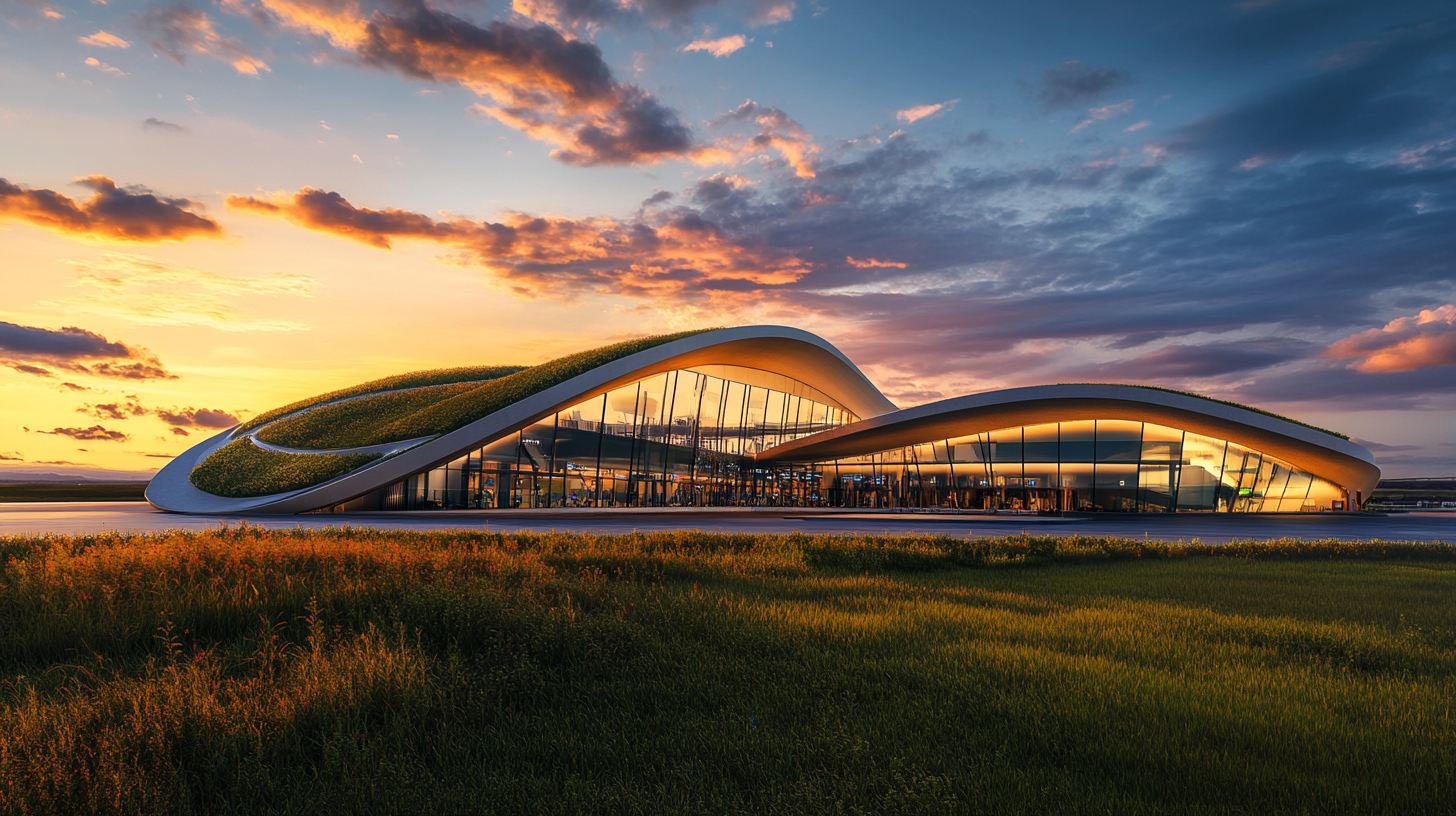
Sustainable airport development extends beyond environmental considerations to encompass community engagement and economic growth. Projects like the expansion of Council Bluffs Municipal Airport by McClure Engineering illustrate how airports can serve as catalysts for regional development while adhering to sustainable practices. The expansion includes sophisticated grading and drainage systems designed to protect local ecosystems and prevent erosion. By collaborating with local contractors and suppliers, the project not only minimizes costs and environmental impact but also bolsters the local economy, fostering goodwill and support from the community. Integrating Community and Sustainability in Airport Development
Similarly, Carver Aero’s acquisition of Advanced Air, Inc. in Council Bluffs signifies a commitment to expanding aviation services in the Midwest with a focus on sustainability. By investing in green aviation technologies and collaborating with educational institutions, Carver Aero is fostering the development of a skilled workforce knowledgeable in sustainable practices. This synergy between business growth and environmental responsibility highlights how airports can play a pivotal role in advancing both economic and ecological objectives. Synergy Between Economic Development and Sustainable Aviation
The Impact of COVID-19 on Airport Design
The COVID-19 pandemic has significantly impacted airport design, accelerating the adoption of features that prioritize hygiene and minimize physical contact. Airports are integrating advanced ventilation systems, antimicrobial materials, and touch-free technologies such as automated check-in kiosks and biometric boarding processes. These design shifts not only address immediate public health concerns but also complement sustainability goals. Improved air filtration systems enhance indoor air quality, while contactless technologies reduce the need for disposable materials, aligning environmental and health objectives in the post-pandemic era. Post-Pandemic Sustainable Airport Design Innovations
Final Thoughts
The evolution of sustainable airport architecture signifies a paradigm shift in how the aviation industry approaches environmental responsibility. No longer a peripheral consideration, sustainability is now integral to the design and operation of modern airports. By innovatively utilizing sustainable materials, integrating renewable energy sources, embracing biophilic design principles, and adopting the latest technological advancements, airports globally are making significant strides in reducing their environmental footprints. These efforts are essential in meeting international climate goals and ensuring the long-term viability of air travel.
Beyond mitigating climate change, sustainable airport architecture enhances the overall passenger experience by creating healthier, more pleasant environments. Operational efficiency is improved through energy savings and streamlined processes, while strong community relationships are fostered by reducing environmental impacts and stimulating local economies. As sustainable practices become the industry standard, airports are poised to evolve into dynamic global gateways that not only facilitate travel but also symbolize the harmonious integration of architectural innovation, operational excellence, and environmental stewardship.
Collaborative efforts are essential in this transformative journey. Architects and engineers must work closely with airport operators and policymakers to integrate sustainable solutions effectively. By sharing knowledge, resources, and best practices, the industry can overcome challenges and accelerate progress towards a more sustainable future. The continued commitment to innovation and environmental responsibility will ensure that airports not only meet the needs of today’s travelers but also contribute positively to the planet for generations to come.
Follow us back to Seat 5A for more insights and updates on sustainable aviation.






